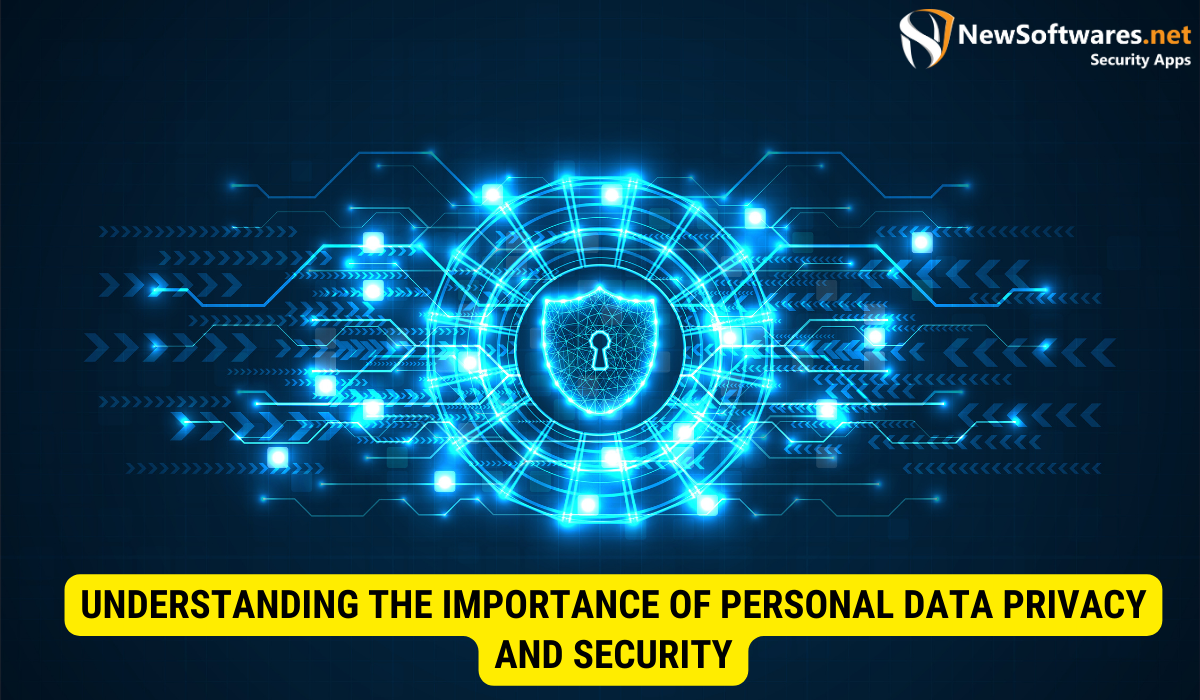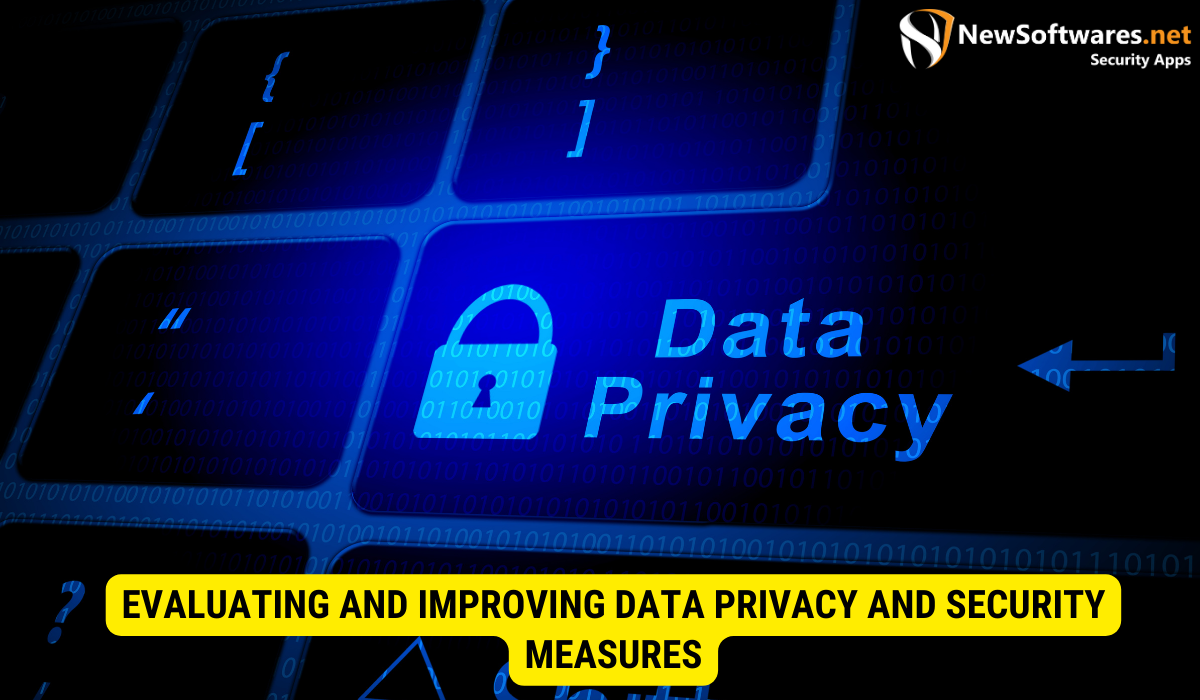Protecting personal data privacy and security is vital for organizations to comply with regulations, maintain trust, and prevent data breaches. Key elements of a robust strategy include identifying sensitive data, implementing strong protection measures, and leveraging encryption and blockchain technology. Building a culture of data privacy through employee training and regular evaluation of measures is crucial for success.
In today’s digital age, personal data has become a vital part of our lives. Whether it’s the information we provide to online platforms or the data that organizations collect through various channels, ensuring the privacy and security of customer information has become a top priority for businesses. I will explore the importance of personal data privacy and security, the key elements of a robust data privacy and security strategy, the role of technology in data protection, building a culture of data privacy within the organization, and evaluating and improving data privacy and security measures.
Understanding the Importance of Personal Data Privacy and Security

As the amount of personal data being collected continues to grow, it is essential to understand the importance of safeguarding this information. Personal data includes any information that can be used to identify an individual, such as their name, address, social security number, or even their browsing history. Protecting this data is not only a legal and ethical responsibility, but it is also crucial for maintaining customer trust and loyalty.
In today’s digital age, the role of personal data has become more significant than ever before. Organizations collect and analyze this information to gain insights into customer behavior, personalize customer experiences, and target marketing efforts. However, the collection and use of personal data also raise concerns about privacy and security.
The legal and ethical implications of data privacy cannot be overlooked. Regulations, such as the General Data Protection Regulation (GDPR) in Europe and the California Consumer Privacy Act (CCPA) in the United States, have been implemented to protect individuals’ rights and ensure proper handling of personal data. Failure to comply with these regulations can result in hefty fines and reputational damage.
Furthermore, the importance of personal data privacy and security extends beyond legal and ethical considerations. Data breaches and cyberattacks have become increasingly common in recent years, with hackers constantly seeking to exploit vulnerabilities in systems and gain unauthorized access to personal information. The consequences of such breaches can be severe, ranging from financial loss and identity theft to reputational damage for both individuals and organizations.
Organizations must take proactive measures to protect personal data from these threats. This includes implementing robust security measures, such as encryption and firewalls, to safeguard data both at rest and in transit. Regular security audits and vulnerability assessments should also be conducted to identify and address any weaknesses in the system.
Moreover, educating employees and raising awareness about the importance of data privacy and security is crucial. Human error remains one of the leading causes of data breaches, with employees falling victim to phishing attacks or inadvertently disclosing sensitive information. By providing comprehensive training and promoting a culture of security awareness, organizations can significantly reduce the risk of data breaches.
Additionally, individuals themselves play a vital role in protecting their personal data. It is essential to exercise caution when sharing personal information online, only providing it to trusted sources and being mindful of the privacy settings on social media platforms. Regularly reviewing and updating passwords, using two-factor authentication, and keeping software and devices up to date with the latest security patches are also essential practices for maintaining personal data privacy and security.
In conclusion, understanding the importance of personal data privacy and security is crucial in today’s digital landscape. Organizations must prioritize the protection of personal data to comply with regulations, maintain customer trust, and mitigate the risks of data breaches. Individuals must also take responsibility for safeguarding their personal information by adopting best practices and staying informed about the latest threats and security measures. By working together, we can create a safer and more secure digital environment for everyone.
Key Elements of a Robust Data Privacy and Security Strategy
Implementing a robust data privacy and security strategy is essential for organizations that handle customer information. This strategy should involve a combination of technical measures, policies and procedures, and employee training to mitigate risks and protect sensitive data.
Identifying and Classifying Sensitive Customer Information
The first step in developing a data privacy and security strategy is to identify and classify sensitive customer information. This includes personally identifiable information (PII) such as names, addresses, phone numbers, social security numbers, and financial data. By understanding what data needs protection, organizations can implement appropriate security measures and controls.
Implementing Strong Data Protection Measures
Once sensitive customer information has been identified, organizations should implement strong data protection measures. This includes encryption of data at rest and in transit, regularly updating security software and systems, and adopting secure authentication mechanisms. Additionally, organizations should follow industry best practices for data storage, such as utilizing secure servers and regularly backing up data.
The Role of Technology in Data Privacy and Security
Technology plays a crucial role in ensuring data privacy and security. With the increasing complexity and sophistication of cyber threats, organizations need to leverage advanced technologies to protect sensitive customer information.
Leveraging Encryption for Data Protection
Encryption is a powerful tool for protecting customer data. It involves encoding information in a way that can only be decoded by authorized individuals or systems. By encrypting sensitive data, even if it is intercepted during transmission or storage, it remains unreadable and unusable to unauthorized parties.
The Impact of Blockchain Technology on Data Security
Blockchain technology, originally designed for cryptocurrency transactions, has found numerous applications in data security. Blockchain is a decentralized ledger that stores records in blocks, making it highly resistant to tampering or unauthorized access. This technology provides a transparent and secure way to store and share sensitive customer information.
Building a Culture of Data Privacy within the Organization
Creating a culture of data privacy within an organization is crucial for ensuring the protection of customer information. Each employee should be aware of the importance of data privacy and their role in safeguarding sensitive data.
Training Employees on Data Privacy Best Practices
Employee education and training programs are key in building a culture of data privacy. Organizations should provide regular training sessions to employees regarding data privacy laws, regulations, and best practices. This includes teaching employees how to identify and handle sensitive customer information, understanding the risks associated with data breaches, and promoting responsible data management.
Promoting a Privacy-First Mindset
Organizations should encourage a privacy-first mindset among employees. This means prioritizing data privacy and security in every aspect of the business, from product development to customer interactions. By instilling a privacy-first mindset, employees become more conscious of their actions and work towards protecting customer information at all times.
Evaluating and Improving Data Privacy and Security Measures

Data privacy and security measures should be regularly evaluated and improved to keep up with evolving threats and changing regulations.
Regular Audits for Data Privacy Compliance
Regular audits and assessments should be conducted to ensure compliance with data privacy regulations and industry standards. These audits can identify any vulnerabilities or gaps in the data privacy and security strategy and provide recommendations for improvement.
Adapting to Evolving Data Protection Regulations
Data protection regulations are constantly evolving to keep pace with emerging technologies and changing privacy concerns. Organizations must stay updated with the latest regulations and adapt their data privacy and security measures accordingly. This may involve updating policies and procedures, implementing new security controls, or providing additional employee training.
Key Takeaways
- Protecting personal data is crucial for maintaining customer trust and loyalty.
- A robust data privacy and security strategy involves identifying and classifying sensitive customer information and implementing strong data protection measures.
- Technology plays a vital role in data privacy and security, including leveraging encryption and blockchain technology.
- Building a culture of data privacy within the organization involves training employees on data privacy best practices and promoting a privacy-first mindset.
- Data privacy and security measures should be regularly evaluated and improved to keep up with evolving threats and regulations.
FAQs
Why is personal data privacy and security important for organizations?
Personal data privacy and security are essential for organizations to protect customer information, maintain trust, comply with data protection regulations, and mitigate the risk of data breaches.
What are some key elements of a data privacy and security strategy?
Some key elements of a data privacy and security strategy include identifying and classifying sensitive customer information, implementing strong data protection measures, leveraging encryption and blockchain technology, training employees on data privacy best practices, and regularly evaluating and improving data privacy and security measures.
How does technology contribute to data privacy and security?
Technology plays a crucial role in data privacy and security by providing tools and solutions such as encryption and blockchain technology, which help protect sensitive customer information from unauthorized access or data breaches.
How can organizations build a culture of data privacy within the organization?
Organizations can build a culture of data privacy by training employees on data privacy best practices, promoting a privacy-first mindset, and integrating data privacy considerations into every aspect of the business.
Why is it important to regularly evaluate and improve data privacy and security measures?
Regularly evaluating and improving data privacy and security measures helps organizations stay ahead of evolving threats, comply with changing regulations, and ensure the continued protection of customer information.
Conclusion
Protecting personal data privacy and security is not only a legal and ethical responsibility but also essential for maintaining customer trust and loyalty. Organizations must develop robust data privacy and security strategies that involve identifying and protecting sensitive customer information, leveraging technology for data protection, building a culture of data privacy within the organization, and regularly evaluating and improving data privacy and security measures. By prioritizing data privacy and security, organizations can safeguard customer information and mitigate the risk of data breaches.
